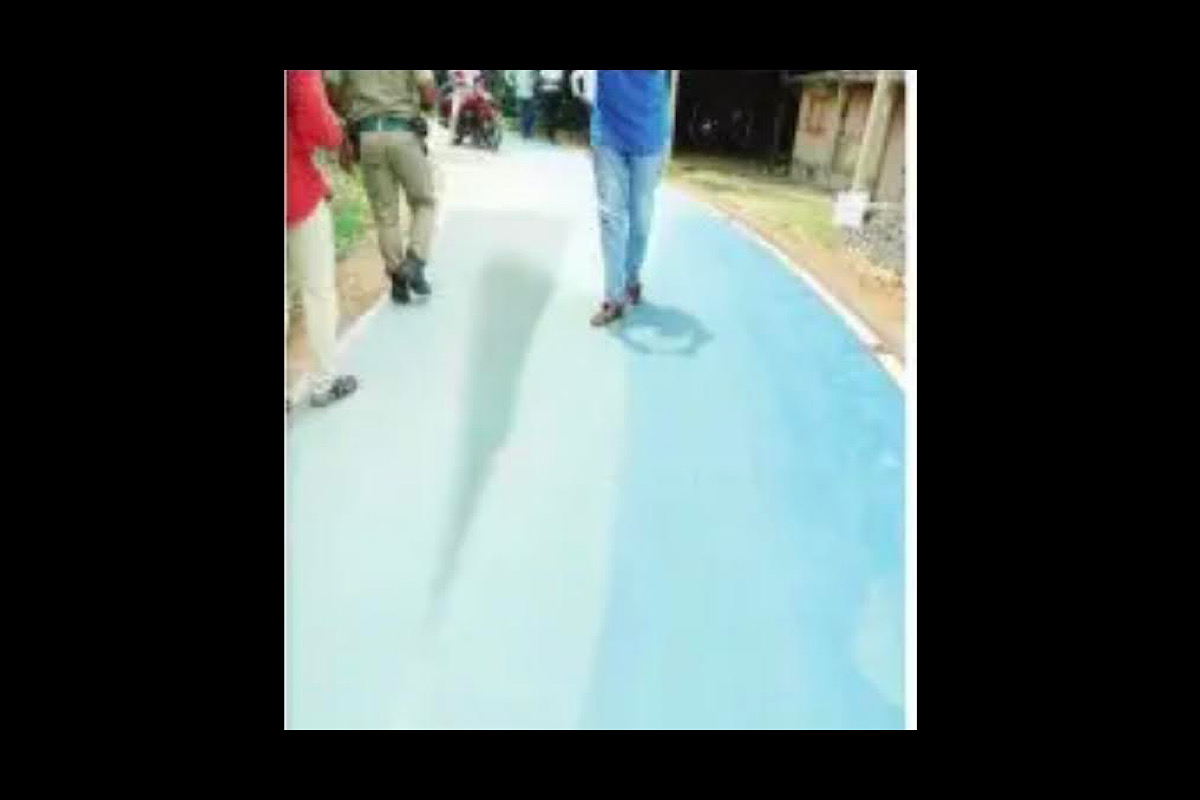State’s first green road in East Burdwan
After having the state's first blue road, East Burdwan now has a green road, a pioneering effort in Bengal, which is now set to be opened for public use.
Instead of having a conventional black-top, that absorbs heat, a “blue road” like this, according to the infrastructure development engineers, will reflect heat to some extent.

State’s first eco-friendly blue road laid to reduce plastic waste (photo:SNS)
A blue road on the red soil of the South Damodar region passing through the green farmlands of East Burdwan has drawn the attention of Bengal’s infrastructure engineering experts as the short road stretch is the state’s pioneering experiment to cool the tarmac surface and reduce the temperature of its surroundings.
Some pockets in East Burdwan recorded the highest temperature of 43.8 Degree Celsius, coupled with high humidity, during the current summer season, incidentally. 350 metre stretch of road in Raina leading to a small canal bridge has been coated with 1 mm blue pigment extracted from non-bio-degradable plastic garbage.
Instead of having a conventional black-top, that absorbs heat, a “blue road” like this, according to the infrastructure development engineers, will reflect heat to some extent.
Advertisement
The road has been laid exploiting technology transferred from Dubai, the project engineers said. The engineers linked to the All India Roads Association helped technology transfer, they said. The road was inaugurated at Uchalon Panchayat in Raina2 block here for public use by state Panchayat and Rural Development Minister Pradip Majumdar yesterday.
The stretch connects Eklakhhi toll plaza and Rautara bridge over the canal. “It’s an amazing effort for environment protection. It’s a true example of recycling the non-degradable plastic, making the construction cost of a longer lasting road a bit cheaper, also reducing the emission of heat by the common bitumen roads,” said Minister Pradip Majumdar.
He added: “The use of molten bitumen is reduced by 10 per cent as shredded plastic is mixed as a substitute. It also helps improve water resistance of the road.” He said this was a pilot project and such blue roads will be laid in every district of the state in phases.
Trials of this technology have been carried out in Doha, Qatar, in Los Angeles, USA and also in Japan – especially in the areas that record intense heat and humidity.
Tarmac or concrete roads absorb solar energy during the day and release it at night – causing the towns to be hotter than the hamlets serviced by earthen roads.
“This new technology is designed to reflect heat and never absorb it,” said Sampa Dhara, Sabhadhipati, East Burdwan Zilla Parishad. Chennai was among the first cities globally to adopt the technology in 2004 and commissioned 1,000 km of plastic roads, followed by Jamshedpur, and Agartala.
Bengaluru also used 3,000 kgs of plastic to develop a road linking to the city’s outer ring road in 2022. According to the reports tabled in Parliament in 2021 July, so far, 703 km of National Highways have been constructed using waste plastic.
“But those roads are not blue roads, they don’t reflect heat as much as the comparatively cheaper Raina road,” an engineer engaged in the Bengal project said. The developers chsrged Rs 22 lakh for laying the 350 metres Raina road, however.
In November 2015, the Central government made it mandatory for road developers to use waste plastic along with bituminous mixes for road construction to overcome the growing problem of disposal of plastic waste in urban India, incidentally. P
Advertisement